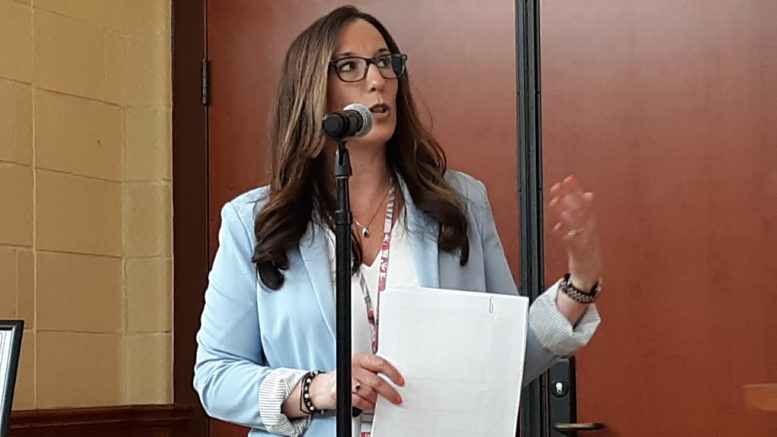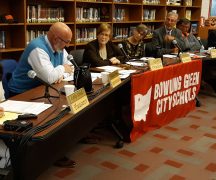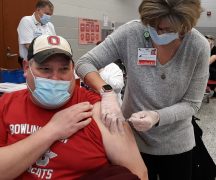By JAN LARSON McLAUGHLIN
BG Independent News
Bowling Green City Schools’ five-year financial forecast shows flat revenues and rising expenses – with the diverging graph lines leading to negative cash revenue by 2026.
Those numbers could trigger the need for a school levy in 2024.
District Treasurer Cathy Schuller updated the five-year forecast at Tuesday’s school board meeting. The forecasts are intended to allow long-range planning for the district.
“This gives us a picture of what’s ahead,” she told the board. “We paint the picture how it looks today.”
Of course, there are several moving pieces that can change.
Tax revenue from the Rover pipeline continues to be uncertain. The second appeal by Rover has been delayed by three hearings being canceled – the most recent one scheduled for May 9. The next hearing has been postponed to August.
“We haven’t heard anything on Rover,” Schuller said. “We’re hopeful we can put this away.”
Another uncertainty is district revenue from the state’s Fair School Funding Plan.
“It’s been quite an ordeal,” she said. “We’ve only received a fraction.”
School funding is shifting, Schuller said, showing a pie chart with local funding sources making up 73% of school funding, and the state filling in the other 27% as of this year. That compares to 71% local and 29% state funding in 2021.
“There’s a heavy reliance on local funding,” she said.
The average revenue growth for the district from 2019-2021 was 1.5%. The forecasted growth from 2022-2026 dips down to 0.37%.
“It’s not getting any better,” Schuller said.
Meanwhile, expenses continue to grow. The average growth from 2019-2021 was 2.2%. The forecasted growth from 2022-2026 is 5.4%. That prediction is up from the 2.6% forecasted last November.
The growing expenditures will soon be eating away at the district’s cash balance.
Personnel expenses are the largest portion of the budget, currently 79%, which is up 2% since November due to new labor contracts. And staff hired through the Elementary and Secondary School Emergency Relief funding will be an expense in the general fund once the ESSER funding expires in 2024.
There are several unknowns ahead, Schuller said, including Rover pipeline revenue, state aid, and expenses involved with updating outdated curriculum. She stressed that overall, the district is in strong financial condition – but proactive planning is essential.





